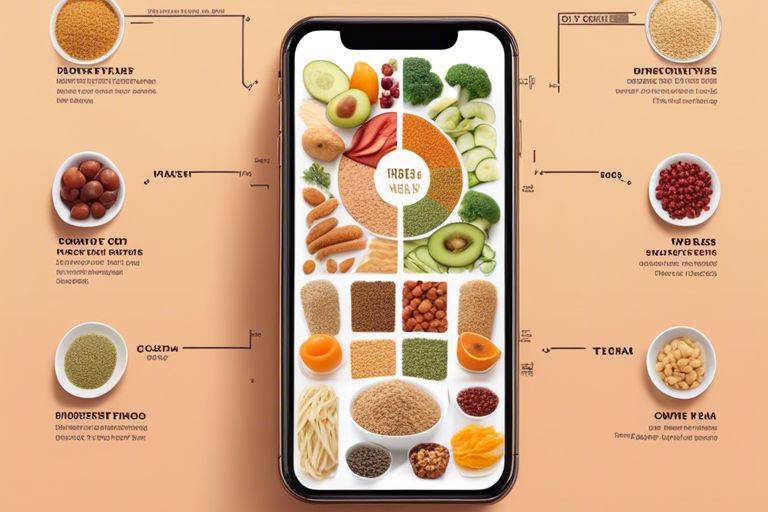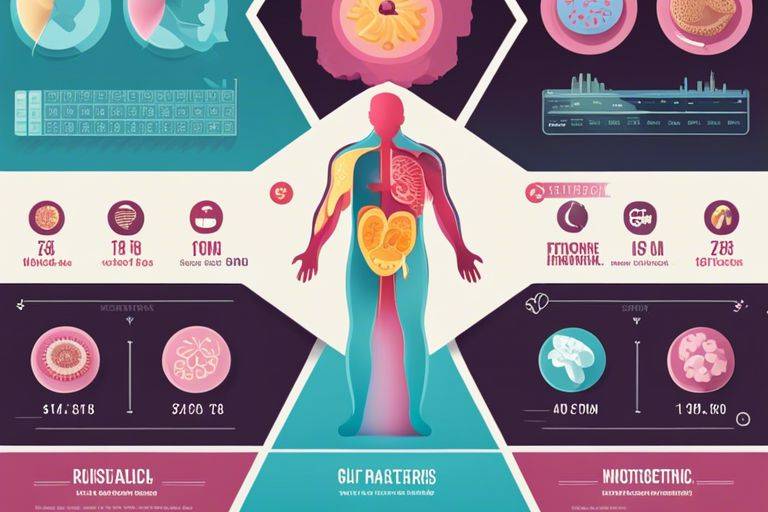You know the struggle when it comes to digestive issues – the discomfort, pain, and inconvenience can really take a toll on your day-to-day life. But what if I told you that there’s a fiber solution that can potentially put an end to all your gut issues? In this complete guide, I’ll walk you through the benefits of fiber for your digestive health, how to incorporate more fiber into your diet, and tips for improving your gut health. If you want to learn more about the best ways to curb digestive issues, check out Best Ways to Curb Digestive Issues.
Key Takeaways:
- Fiber is crucial: Incorporating fiber into your diet can help alleviate gut issues and promote overall digestive health.
- Soluble vs. Insoluble fiber: Both types of fiber are important for gut health. Soluble fiber helps with digestion and insoluble fiber adds bulk to stools.
- Varied sources of fiber: Include a variety of fruits, vegetables, whole grains, legumes, and nuts in your diet to ensure you are getting different types of fiber.
- Hydration is key: Drinking plenty of water is important when increasing fiber intake to prevent constipation and aid in digestion.
- Gradually increase fiber intake: Rapidly increasing fiber consumption can lead to bloating and gas. Slowly introduce more fiber into your diet to allow your body to adjust.
- Consult a healthcare professional: If you have severe gut issues or digestive problems, consult a healthcare provider or nutritionist for personalized advice.
- Be consistent: Consistently consuming an adequate amount of fiber and staying hydrated is crucial for maintaining good gut health in the long term.
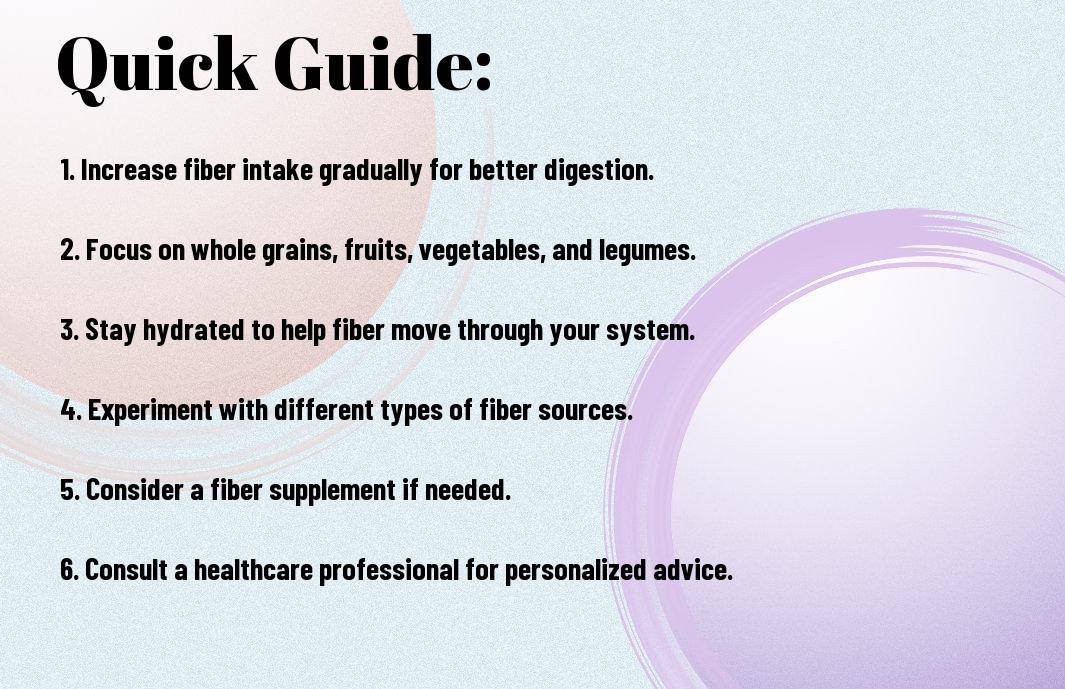
Understanding Gut Issues
A How to Reset Your Gut in 3 Days can be a game-changer when it comes to addressing gut issues. It provides a roadmap to reset your gut and improve digestive health.
Types of Gut Issues
- On one hand, IBS (Irritable Bowel Syndrome) causes discomfort.
- Another issue, Leaky Gut Syndrome, affects gut barrier function.
- Then there’s Dysbiosis, an imbalance in gut bacteria.
- Constipation and Diarrhea are common gut issues too.
- Knowing the type of gut issue you have is important for effective treatment.
Common Symptoms and Causes
If you experience digestive discomfort, bloating, gas, or irregular bowel movements, you may have a gut issue. Stress, poor diet, infections, and medication can all contribute to these symptoms.
The Role of Fiber in Gut Health
An adequate intake of fiber is vital for maintaining good gut health. Fiber helps regulate digestion, promotes the growth of beneficial gut bacteria, and prevents constipation. Including a variety of fiber-rich foods like fruits, vegetables, whole grains, and legumes in your diet can significantly improve your gut health.
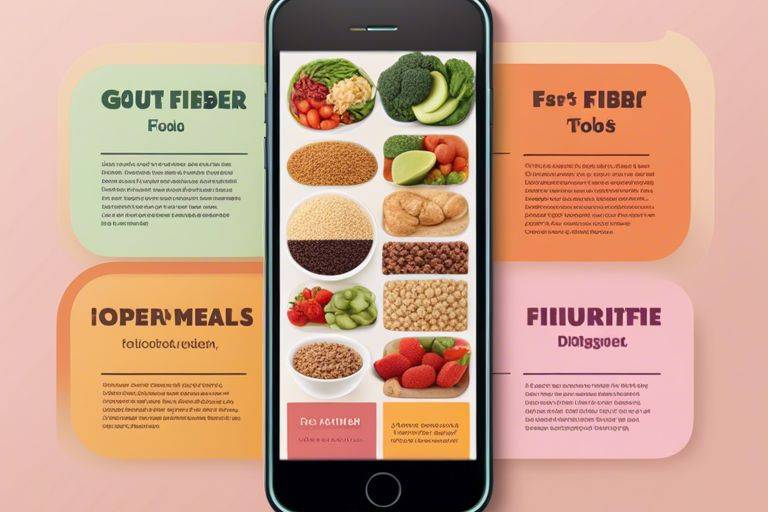
Benefits of Fiber for Gut Health
Improving Digestion and Regularity
While fiber helps to improve digestion and regularity, it acts as a broom inside your gut, sweeping away waste and aiding in smooth bowel movements. An adequate intake of fiber ensures that your digestive system functions efficiently, preventing constipation and promoting regularity.
Boosting Gut Bacteria
On a deeper level, fiber acts as a prebiotic, providing fuel for the beneficial bacteria in your gut. The more diverse and abundant your gut bacteria, the better your overall gut health. Fiber-rich foods such as fruits, vegetables, whole grains, and legumes can help nourish these important microbes.
To further support your gut bacteria, consider incorporating fermented foods like yogurt, kefir, and kimchi into your diet. These foods contain probiotics, which are live bacteria that offer additional health benefits to your gut.
Reducing Inflammation and Pain
Boosting your fiber intake can also help reduce inflammation and pain in your gut. Fiber acts as a soothing agent, reducing irritation and inflammation in the digestive tract. This can be especially helpful for individuals with conditions like irritable bowel syndrome (IBS) or inflammatory bowel disease (IBD).
Plus, a high-fiber diet has been linked to a lower risk of developing various gastrointestinal disorders, including colorectal cancer. It’s a simple and effective way to promote long-term gut health and reduce the risk of serious health issues.
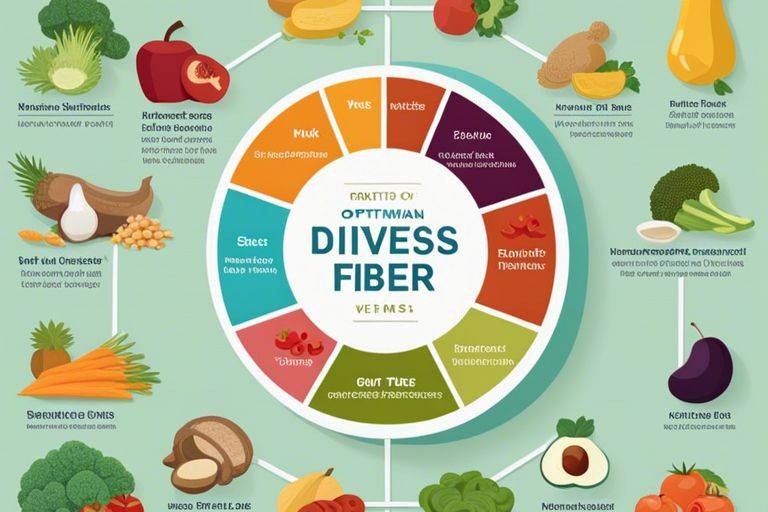
Types of Fiber for Gut Health
Your gut health can greatly benefit from incorporating different types of fiber into your diet. There are three main types of fiber that each play a unique role in promoting a healthy digestive system: soluble fiber, insoluble fiber, and prebiotic fiber.
| Soluble Fiber | Insoluble Fiber |
| Soluble fiber dissolves in water and forms a gel-like substance in the gut, helping to slow down digestion. It can be found in oats, fruits, and vegetables. | Insoluble fiber does not dissolve in water and adds bulk to the stool, aiding in regular bowel movements. Good sources include whole grains and legumes. |
| Prebiotic Fiber | |
| Prebiotic fiber acts as food for the beneficial bacteria in the gut, promoting a healthy gut microbiome. Foods rich in prebiotic fiber include asparagus, bananas, and onions. |
Soluble Fiber: Oats, Fruits, and Vegetables
If you’re looking to improve your digestion and promote a healthy gut, incorporating foods rich in soluble fiber like oats, fruits, and vegetables is key. Soluble fiber helps to slow down digestion, keeping you feeling full longer and stabilizing blood sugar levels. Moreover, it promotes the growth of beneficial bacteria in the gut, leading to overall improved gut health.
Insoluble Fiber: Whole Grains and Legumes
If you want to support regular bowel movements and prevent constipation, insoluble fiber found in whole grains and legumes is crucial. This type of fiber adds bulk to the stool, helping to move waste through the digestive tract efficiently. Additionally, insoluble fiber supports a healthy gut by promoting a diverse microbiome and reducing the risk of digestive issues.
The benefits of insoluble fiber are crucial for maintaining a healthy digestive system. It aids in preventing constipation by adding bulk to the stool, facilitating smooth bowel movements. Moreover, insoluble fiber supports overall gut health by promoting regularity and preventing digestive issues like diverticulitis.
Prebiotic Fiber: Asparagus, Bananas, and Onions
Legumes, bananas, asparagus, and onions are excellent sources of prebiotic fiber, which plays a vital role in nurturing the beneficial bacteria in your gut. By consuming foods rich in prebiotic fiber, you can create a thriving environment for these good bacteria to flourish, leading to improved gut health and enhanced immune function.
Fruits like bananas, vegetables like asparagus, and onions are packed with prebiotic fiber, which serves as fuel for the beneficial bacteria in your gut. These foods promote a healthy gut microbiome, supporting digestion and overall well-being. Incorporating prebiotic-rich foods into your diet can help rebalance and maintain a diverse gut flora, leading to improved gut health and overall wellness.
Tips for Increasing Fiber Intake
After addressing gut issues with a fiber solution, it’s important to focus on increasing your fiber intake for long-term digestive health. Here are some tips to help you boost your fiber consumption:
- Start with small amounts and gradually increase to give your body time to adjust.
- Incorporate high-fiber foods into your daily meals and snacks.
- Consider fiber supplements if needed to reach your daily fiber goals.
Start with Small Amounts and Gradually Increase
Start by adding small portions of fiber-rich foods like fruits, vegetables, whole grains, and legumes to your meals. Slowly increase the amount over a few weeks to prevent bloating or discomfort. This gradual approach allows your body to adapt to the increased fiber intake without causing any digestive issues. The key is to listen to your body and make changes at a pace that feels comfortable for you.
Incorporate High-Fiber Foods into Your Diet
Increase your consumption of foods high in fiber such as berries, avocados, broccoli, chia seeds, and quinoa. These nutrient-dense options not only provide a good source of fiber but also offer a variety of vitamins, minerals, and antioxidants. Adding these foods to your daily diet can help you meet your fiber requirements while promoting overall health and well-being.
Foods: Including a mix of soluble and insoluble fiber sources like oats, nuts, seeds, and whole grains can ensure you’re getting a balanced intake for optimal digestive function. Experiment with different foods to find the ones that work best for you and keep your meals interesting and satisfying.
Consider Fiber Supplements
Your healthcare provider may recommend fiber supplements if you struggle to get enough fiber from food alone. Supplements like psyllium husk, wheat dextrin, or methylcellulose can help increase your fiber intake efficiently. However, it’s important to consult with a healthcare professional before starting any new supplement to ensure it’s safe and suitable for your individual needs.
Tips: When choosing a fiber supplement, opt for products that are natural and have minimal additives or artificial ingredients. Always follow the recommended dosage instructions and drink plenty of water throughout the day to prevent constipation and maintain healthy digestion.
Step-by-Step Guide to Implementing a High-Fiber Diet
Once again, transitioning to a high-fiber diet can work wonders for your gut health. Here is a step-by-step guide to help you seamlessly incorporate fiber-rich foods into your daily meals.
| Week 1-2: Assess Your Current Diet and Set Goals | |
| Week 3-4: Incorporate New Fiber-Rich Foods | |
| Week 5-6: Monitor Progress and Adjust as Needed |
Week 1-2: Assess Your Current Diet and Set Goals
Step-by-step, take a closer look at your current eating habits. Track your daily food intake and identify areas where you can add more fiber. Set realistic goals to gradually increase your fiber intake over the next few weeks.
Week 3-4: Incorporate New Fiber-Rich Foods
While transitioning to a high-fiber diet, start by introducing new fiber-rich foods like whole grains, fruits, vegetables, and legumes into your meals. Experiment with different recipes to keep your meals exciting and enjoyable.
For instance, swap out white rice for brown rice, include more leafy greens in your salads, snack on nuts and seeds, and add beans to soups and stews. These small changes can significantly boost your daily fiber intake.
Week 5-6: Monitor Progress and Adjust as Needed
To guide your progress, keep a food journal to track your fiber consumption and note how your body responds. If you experience bloating or discomfort, adjust your fiber intake by increasing water consumption and gradually introducing higher-fiber foods.
Guide your journey towards a high-fiber diet with regular updates on your goals and listening to your body’s signals as you make these dietary changes. Bear in mind, progress takes time, so be patient with yourself as you work towards better gut health.
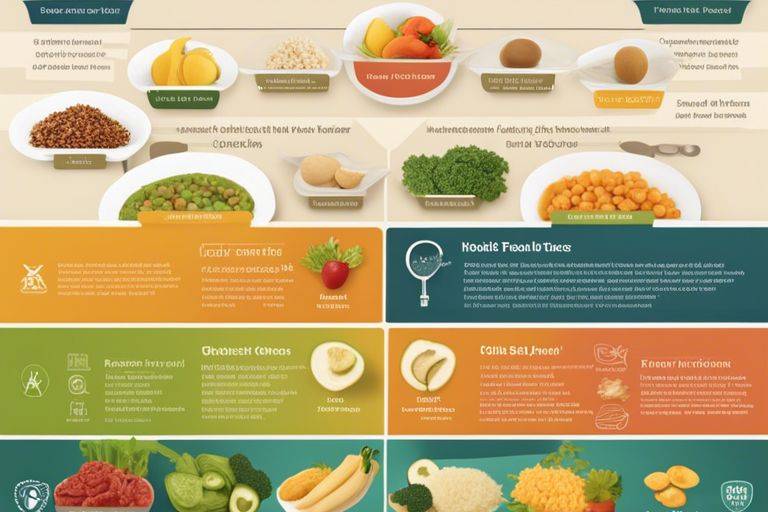
Factors to Consider When Choosing Fiber-Rich Foods
Now, when considering fiber-rich foods, it’s important to take into account a few factors to ensure you are making the best choices for your gut health. Here are some things to keep in mind:
- Type of Fiber: Look for foods that contain a variety of soluble and insoluble fiber to promote a healthy digestive system.
- Nutrient Content: Choose foods that are not only high in fiber but also rich in other important vitamins and minerals to support overall health.
- Added Sugars: Avoid processed foods with added sugars that can negate the benefits of fiber and contribute to gut issues.
After considering these factors, you can make informed decisions about incorporating fiber-rich foods into your diet for optimal gut health.
Allergies and Intolerances
Now, it’s important to be aware of any allergies or intolerances you may have when choosing fiber-rich foods. Some common allergens include gluten, nuts, and dairy. Be sure to read labels carefully and choose options that work best for your body.
Cooking and Preparation Methods
Clearly, the cooking and preparation methods can impact the fiber content of foods. When possible, opt for steaming, roasting, or raw preparations to retain the highest amount of fiber. Avoid deep frying or overcooking, as this can break down the fiber content.
When cooking vegetables, leave the skins on whenever possible, as this is where a significant amount of the fiber is found. Additionally, try to incorporate a variety of preparation methods into your meals to ensure you are getting a good mix of soluble and insoluble fiber.
Combining Fiber with Other Nutrients
There’s no denying the importance of combining fiber with other nutrients to maximize the benefits for your gut health. For example, pairing fiber-rich fruits with sources of healthy fats like nuts or seeds can help slow down the digestion process and promote fullness.
It’s important to note that consuming fiber with adequate water intake is key to prevent digestive issues such as constipation. Additionally, make sure to include a balance of protein, fats, and carbohydrates in your meals to support overall nutritional needs.
Pros and Cons of a High-Fiber Diet
All the benefits and potential drawbacks of a high-fiber diet can have a significant impact on your overall well-being. Here is a breakdown of the pros and cons:
| Advantages | Disadvantages |
| Improved Gut Health | Gas, Bloating, and Digestive Discomfort |
| Weight Management | Intestinal Blockages |
| Lower Cholesterol Levels | Interference with Medications |
| Blood Sugar Control | Nutrient Absorption Issues |
| Reduced Risk of Chronic Diseases | Increased Flatulence |
Advantages: Improved Gut Health and Regularity
Assuming you are looking to improve your gut health and maintain regular bowel movements, a high-fiber diet can be incredibly beneficial. Fiber helps to promote the growth of good bacteria in your gut, which can improve digestion and prevent constipation.
Disadvantages: Gas, Bloating, and Digestive Discomfort
Consistently consuming high amounts of fiber can lead to unwanted side effects such as gas, bloating, and digestive discomfort. It’s imperative to increase your fiber intake gradually and drink plenty of water to help your body adjust. If you experience severe discomfort, it may be a sign to reduce your fiber intake temporarily.
Conclusion
Hence, I hope this complete guide has provided you with valuable information on how to improve your gut health by incorporating fiber into your diet. Fiber supplements can be a helpful addition, and if you are considering one, make sure to check out this article on How Do I Choose the Best Fiber Supplement? to make an informed decision. Here’s to better gut health and overall well-being!
FAQ
Q: What are gut issues and how can fiber help solve them?
A: Gut issues refer to any digestive problems or disorders that affect the gastrointestinal system. Fiber can help improve gut health by promoting regular bowel movements, supporting good bacteria in the gut, and aiding in digestion.
Q: How much fiber should I be consuming daily to help with gut issues?
A: The recommended daily fiber intake is 25 grams for women and 38 grams for men. However, individual needs may vary based on age, gender, and overall health. Consult with a healthcare provider to determine the right amount for you.
Q: What are some good sources of fiber that I can incorporate into my diet?
A: Some excellent sources of fiber include fruits, vegetables, whole grains, legumes, nuts, and seeds. Incorporating these foods into your daily meals can help increase your fiber intake and improve gut health.
Q: Can increasing fiber intake cause any digestive issues?
A: Increasing fiber intake too quickly or consuming excessive amounts of fiber without adequate water intake can lead to digestive issues such as bloating, gas, and diarrhea. It is important to gradually increase fiber intake and drink plenty of water to prevent these issues.
Q: How long does it take for fiber to have an impact on gut health?
A: The effects of increasing fiber intake on gut health can vary from person to person. Some individuals may notice improvements in digestion and bowel movements within a few days, while others may take longer to experience the benefits. Consistency is key when it comes to improving gut health with fiber.
Q: Can fiber supplements be as effective as getting fiber from whole foods?
A: While fiber supplements can help boost fiber intake, getting fiber from whole foods is generally more beneficial as it also provides necessary vitamins, minerals, and antioxidants. It is best to focus on a diet rich in whole, fiber-rich foods for optimal gut health.
Q: Are there any specific types of fiber that are particularly beneficial for gut health?
A: Soluble fibers, such as those found in oats, legumes, and fruits, are especially beneficial for gut health as they help feed good bacteria in the gut and support overall digestion. Including a variety of both soluble and insoluble fibers in your diet is recommended for optimal gut health.
